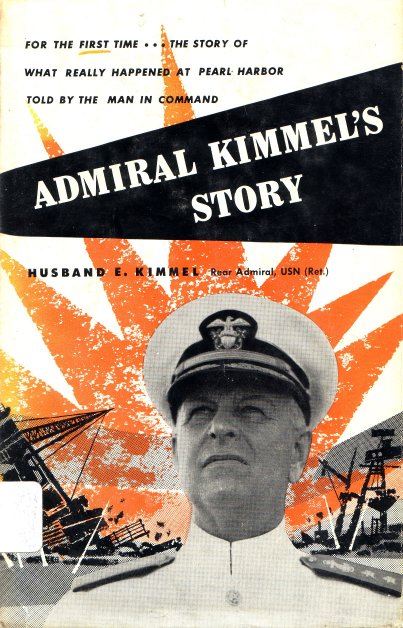
Admiral Kimmel's Story (1955)

This is one of the two men that was basically blamed for the unready state of Pearl Harbor before the Japanese attack on December 7, 1941. The book approaches the issue using the argument that the admiral was denied access to very important documents and intercepted messages, messages that could have allowed the ships at Pearl Harbor to take defensive measures against the Japanese fleet and even attack the approaching fleet.
It also uses the argument that the FDR on purpose provoked the Japanese into attacking.
The book has a lot of references to specific messages, warnings and intercepts. It's not a “what-if” type of a book and it makes a very good case for the concept that FDR wanted a war and made sure Pearl Harbor commanders were not warned on purpose because then they could have prevented the attack.
Oliver Lyttleton, British Minister of Supplies, June 20, 1944: “America provoked Japan to such an extent that the Japanese were forced to attack Pearl Harbor.”
Secretary of War Stimson: “The question was how we should maneuver them into firing the first shot without allowing too much damage to ourselves. It was a difficult proposition.”
”Care was taken not to send us the intercepted Japanese messages which told in great detail each step in the Japanese program.” These were messages that were not sent to Kimmel for a period of three months before Pearl Harbor. The messages clearly indicated an imminent Japanese attack on the harbor and the fleet located there.
The book says that the American fleet was inferior to the Japanese fleet in every way. For example, Japan had 9 aircraft carriers at the start of the war, and we only had 3, and those did not carry full compliments of planes.
On February 1 of 1941 Kimmel received a report from the Chief of Naval Operations about rumored attacks on Pearl Harbor:
”The Peruvian minister has informed a member of my staff that he has heard from many sources, including a Japanese source that in the event of trouble breaking out between the United States and Japan, the Japanese intend to make a surprise attack against Pearl Harbor with all of their strength and employing all of their equipment. The Peruvian minister considered the rumors fantastic. Nevertheless, he considered them of sufficient importance to convey this information to a member of my staff.”
There is message that was considered a “war warning” that was sent to the base, and it's cited by others as proof that the admiral knew that an attack was coming. Yet the message itself did not warn of an attack anywhere around Hawaii. The message did warn about possible Japanese movements against the Philippines, Thailand or Borneo. None of those are anywhere near Pearl Harbor.
The book discusses whether or not the US knew that Japanese aircraft carriers were on a path that could lead them to Hawaii.
The admiral notes that his predecessor at the base had suggested that the Pacific fleet be based on the US West Coast and not in Hawaii. That would have made supply, repair and training much easier. All the war plans prior to 1941 had the fleet based on the West Coast.
There were a series of messages from Japan to Honolulu for Japanese agents to monitor the ships at the base and their coming and going. These intercepted messages were also not made available to the admiral.
He says that if he had received notice of the messages, the situation at the base would have been “radically altered.” He would have had time to put some ships to sea, recalled some aircraft carriers, and better prepared what ships were left in the harbor for the coming attack.
A message intercepted and delivered to FDR on December 6, 1941, apparently convinced the President that war was coming, yet, again, the admiral was not informed of the message.
The admiral writes that, if he had received the message even as late as the afternoon of December 6, he could have taken steps to prevent the surprise attack or at least make its effect much less.
The book quotes a Captain Russel Grenfell of the Royal Navy in his book Fleet to Singapore (1952), as saying that “It is beyond doubt that President Roosevelt wanted to get his country into the war, but for political reasons was most anxious to insure tha the first act of hostility came from the other side. For which reason he caused increasing pressure to be put on the Japanese, to a point that no self-respecting nation could endure without resort to arms. Japan was meant by the American President to attack the United States.”
(The following pictures are from a different source)
Main Index
Japan main page
Japanese-American Internment Camps index page
Japan and World War II index page
|